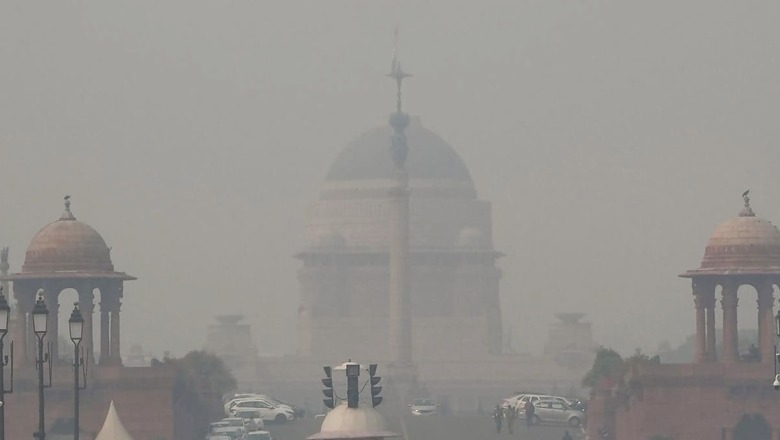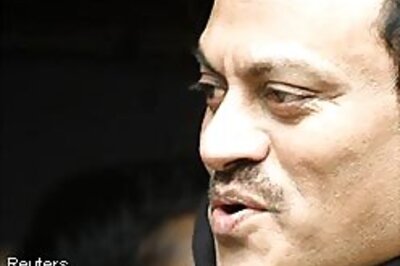
views
Winter is knocking at the doors of the national capital. Around 15 years ago, this season was eagerly anticipated, but today its arrival brings the dread of a polluted atmosphere. A large number of the citizens of the national capital, those who can afford, have created a winter home in distant towns and cities to escape the poisonous air.
With the onset of winter, the incompetence of the authorities responsible for maintaining clean air becomes apparent. The so-called ‘precautions’ and ‘preventive measures’, often taken as knee-jerk reactions following a Supreme Court diktat, often end in taxing the citizens, who ironically are being forced to inhale poisonous air.
One such proposed move is to introduce a congestion tax on vehicles entering New Delhi. According to a newspaper report: “In an effort to reduce traffic congestion and improve air quality, the Delhi government is considering implementing a congestion tax on vehicles entering the city during peak hours. The tax, aimed at decongesting major entry points to the capital, would apply between 8 am and 10 am, and 5.30 pm and 7.30 pm at 13 major border entry points. The revenue collected would be used to improve public transportation and road infrastructure.”
Justifications for such moves are made by pointing to cities like London, Singapore and New York. First of all, these three cities have robust public transport systems, which Delhi lacks. Its once-robust bus service has all but broken down, with the Delhi government failing to add any new CNG buses to the dwindling fleet of the Delhi Transport Corporation (DTC). The new electric buses which ply on the roads have been provided by the Centre. Ironically, many of them are not operational due to inadequate infrastructure at DTC depots, which have not been sufficiently upgraded to charge the buses’ batteries in a timely manner. With the collapse of bus transport, passengers have shifted en masse to the Metro, whose expansion itself is running years behind schedule.
Next, Delhi is part of the National Capital Region (NCR), an arrangement under which many industries and commercial operations based in Delhi were encouraged to move to neighbouring districts in Haryana and Uttar Pradesh. Also, a large number of people seeking employment in Delhi have settled in residential colonies built in these neighbouring districts. Many Delhi residents have also moved to these modern suburbs.
If one were to observe traffic patterns over two days, it would become evident that not only do large numbers of people commute from NCR districts to work in Delhi, but equally large numbers travel from the national capital to NCR districts for work. According to the newspaper report, “The revenue collected would be used to improve public transportation and road infrastructure.”
Given the deterioration of public transportation and road infrastructure in the national capital over the past decade, what guarantee is there that these funds will actually be used as promised? Moreover, if the government had maintained an adequate public transport system and road network in recent years, would dust-based pollution have been brought under control?
Another major cause of pollution in the national capital is traffic snarls. This is largely due to the significant delays in road expansion projects, and even those that have been completed suffer from structural flaws. For instance, the Bhairon Marg tunnel, which connects India Gate to the Outer Ring Road, has become more congested during peak hours than the original route through Bhairon Marg ever was.
If the Delhi government proceeds with its plan to impose taxes during peak traffic hours at the 13 key entry points into the national capital, imagine the traffic snarls that could result. Government officials explained, “The congestion tax will be collected automatically through FASTag, the system already used for toll collection, to avoid creating further traffic jams. It will not be manual but instead through RFID readers and NPR (number plate recognition) cameras, so vehicles won’t need to stop. Otherwise, the whole purpose would be defeated if this caused congestion.” However, this is easier said than done.
For over 25 years, the MCD has been collecting toll taxes from commercial vehicles, yet they have still not implemented an efficient tax collection system at the borders. Even four taxis arriving at a border tax booth can lead to long queues. Now imagine the chaos this new tax regime would cause when every vehicle crossing the border is scrutinised.
Pollution in the national capital is mainly due to two factors: the poor condition of roads and the broken public transport infrastructure within the city, as well as the change in cropping patterns in Punjab, which leads to stubble burning during the season of slow winds. These problems can be addressed if the government demonstrates the will to repair roads promptly and invest in expanding the public transport fleet.
The Supreme Court has now sufficiently empowered the executive to act against stubble burning. Both problems—stubble burning and pollution—can be resolved if the government shows the will and determination to tackle them. However, the current approach seems to be to first allow citizens to fall ill and then tax them to address the cause of their illness. This reflects a case of apathetic governance.
The writer is an author and president, Centre for Reforms, Development & Justice. Views expressed in the above piece are personal and solely those of the author. They do not necessarily reflect News18’s views.



















Comments
0 comment